
Luxury isn’t just for the ultra-wealthy anymore.
60% of luxury consumers sit in low to middle-income brackets (GWI). Surprised? Don’t be.
Today’s buyers are sharper, faster, and expect more. They don’t just want products—they want meaning, status, and a story they see themselves in.
They’re not passive. They research, compare, and demand meaning in return for their money.
So how do luxury brands stay relevant and exclusive in a saturated, hyper-digital world?
That’s what we’re diving into
What is luxury marketing?
Luxury marketing isn’t just selling expensive things. It’s about building desire. It’s about making people want you.
What luxury brand marketing really means now
Today’s luxury brands operate in a world of curated storytelling, emotional resonance, and visual perfection. The aesthetic is serious, intentional, and cohesive.
Where luxury once relied on magazine spreads and red carpet placements, it now lives in always-on, digital ecosystems—from Instagram Reels to immersive web experiences and personalised CRM journeys.
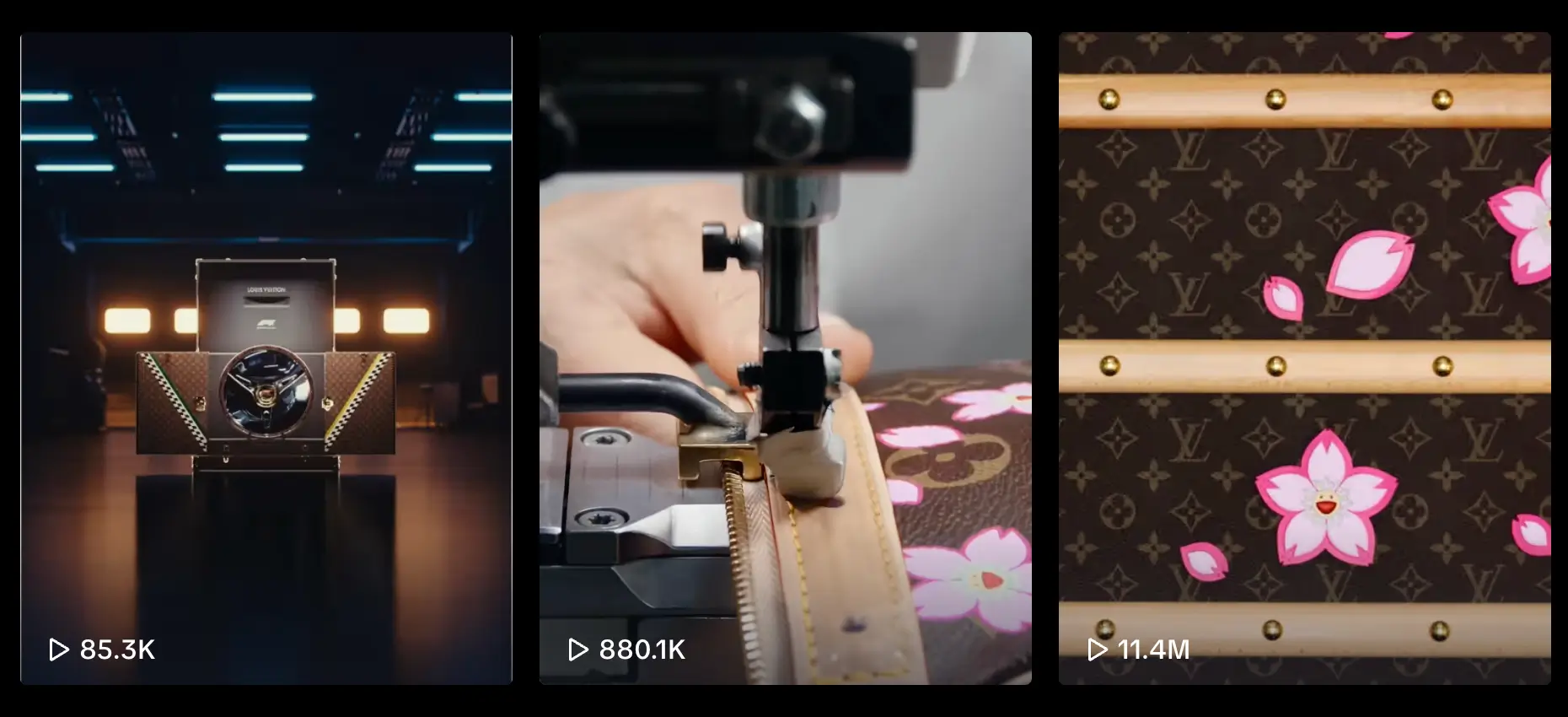
Even luxury powerhouse brands like Louis Vuitton use TikTok as a marketing tool
As Bez Agency puts it:
“Luxury is about how it makes you feel, not just what it costs. If it doesn’t evoke something, it’s forgettable.”
That feeling—exclusivity, desire, identity—is what today’s luxury brand marketing must deliver at every interaction.
“We’re not selling products. We’re selling access, identity, and that feeling of being part of something rare.”
A high-performing luxury brand social media marketing strategy isn’t optional—it’s the front line. It’s where your story unfolds, your value is communicated, and your audience decides whether they want in.
“High-end brands need more than pretty. They need consistency, mystery, and meaning across every touchpoint.”
The brands that win don’t just look good—they feel unforgettable.
The biggest challenges in luxury marketing today
Luxury doesn’t play by the old rules anymore. The market has shifted, audiences are savvier, and standing out takes more than a nice logo and a polished feed.
These are the real challenges luxury brands are facing—and what they can learn from them.
1. “Luxury” doesn’t mean what it used to
Everyone’s calling themselves luxury now—from fast-fashion capsule lines to $80 candles with fancy fonts. The word’s lost some of its weight.
Case in point: Michael Kors exploded in popularity, but mass distribution and constant discounting diluted its luxury status. When everyone has it, it stops feeling exclusive.
Don’t just say you’re luxury—prove it through restraint, curation, and quality that speaks for itself.
2. Exclusivity is harder when you’re always online
Luxury thrives on mystery. But when your brand is expected to show up daily on social, that mystique can fade fast.
Bottega Veneta changed the game in 2021 by deleting all social media channels—and the internet went wild. Suddenly, the brand felt rare again. Sales didn’t dip. Interest spiked.
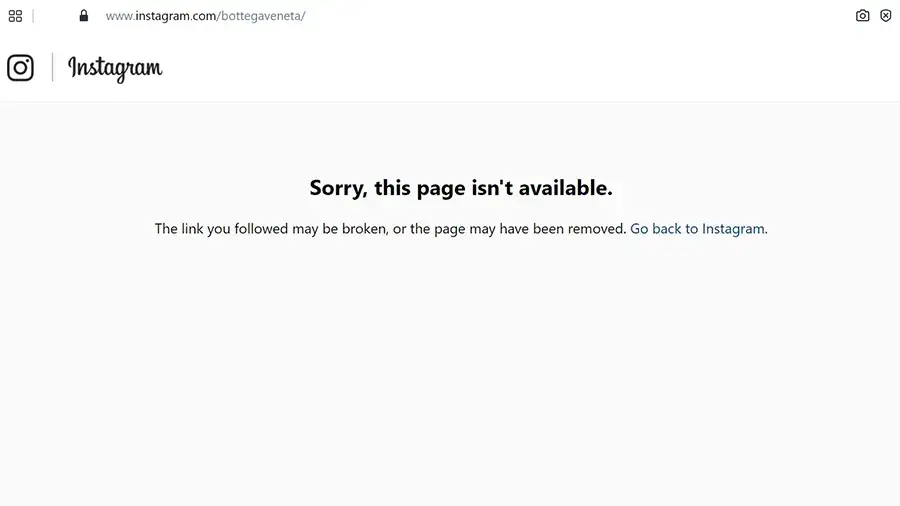
Bottega Veneta made a bit gamble when they deleted all socials—but it paid off
Sometimes less visibility creates more value. Control the narrative instead of chasing every trend.
3. Content saturation is real
It’s not just other brands you’re competing with. It’s creators. Influencers. Gen Z editors posting iPhone-shot TikToks with millions of views.
Emma Chamberlain’s Met Gala prep vlog with Cartier felt more authentic and culturally relevant than many brand-led campaigns. Why? Because it was real, raw, and still aspirational.
Impact beats perfection. Luxury content needs fresh creative thinking, not just polished visuals.
4. Younger audiences want more than image
Millennials and Gen Z aren’t buying logos—they’re buying values. They want to align with brands that stand for something and show up with purpose.
Telfar nails this. With the tagline “Not for you—for everyone,” the brand built a movement around accessible luxury, community, and culture. Its drops sell out in minutes—not just for the product, but for what it represents.
A strong brand story isn’t enough. You need a point of view and the receipts to back it up.
5. Economic pressure is testing loyalty
Even high-end buyers are being more selective. Flashy branding isn’t enough to hold attention—or justify a $3,000 price tag.
Burberry’s identity got blurry after years of chasing streetwear hype. Under Daniel Lee, the brand is now pulling back to its heritage—stripping it back to quality, craft, and British identity.
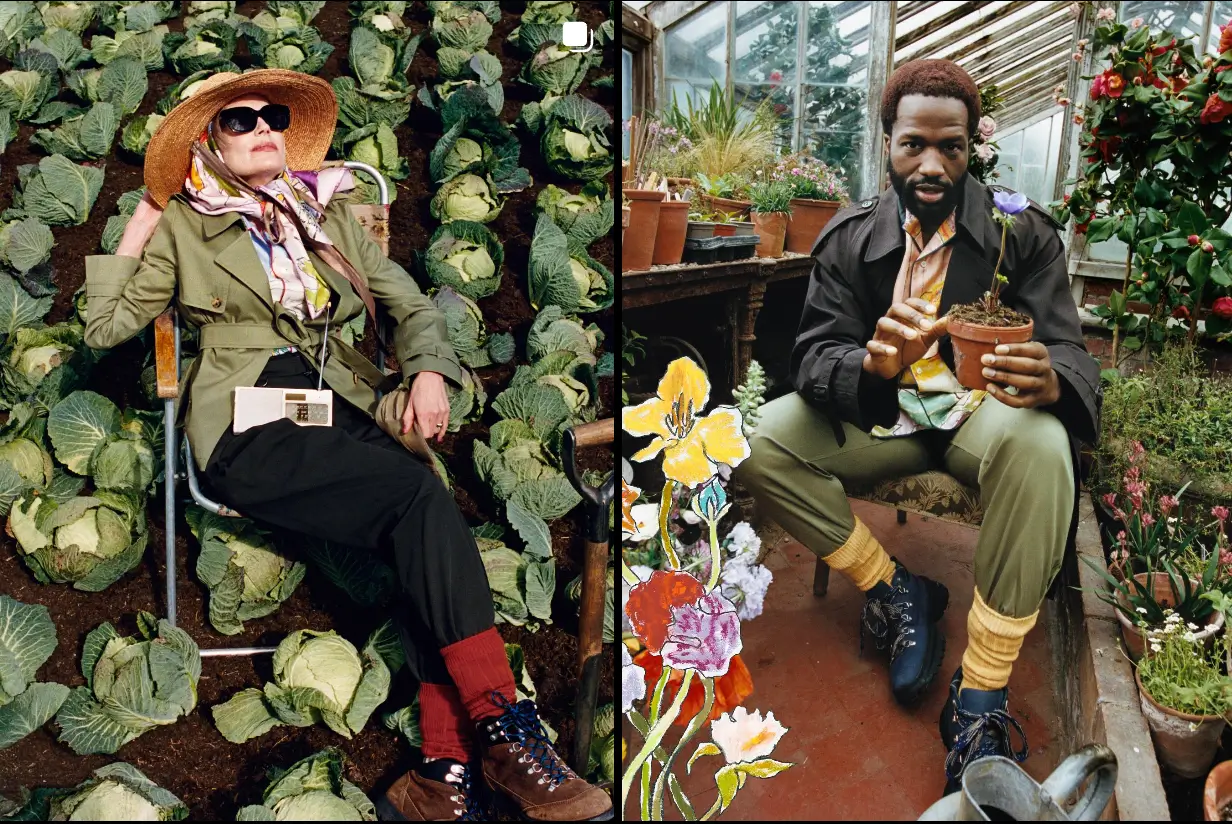
Burberry has returned to showcasing its craftsmanship and British identity
So, stay grounded in who you are. Relevance is earned, not assumed.
5 luxury brand marketing strategies that actually work
If you want to cut through in luxury, every move needs to be intentional, emotional, and built around what makes your brand different.
Here’s what works—and why.
1. Own your origin story
In luxury, your story is the strategy.
Whether it’s a founder’s obsession, a legacy product, or a design philosophy no one else can claim—this is your edge.
But it can’t just sit on your About page. Your story needs to be felt across every touchpoint. Visually rich. Emotionally sharp. Consistent from social to site to paid.
At Bez Agency, this is our starting point.
We bring brand stories to life through website design, content, ads, and social strategy. That might mean crafting a cinematic video about your origins, building a site that reflects your heritage, or launching campaigns that sell your uniqueness—not just your product.
When your story is clear, your brand becomes the thing people want to belong to.
2. Design experiences that feel like a privilege
Luxury isn’t just about the product—it’s about how people feel in your world.
From private pop-ups to bespoke onboarding emails, the best luxury marketing creates the sense that your customer is in on something rare. Access is the flex.
And the moment someone feels chosen? That’s where brand loyalty begins.
Think smaller, smarter, and more personal.
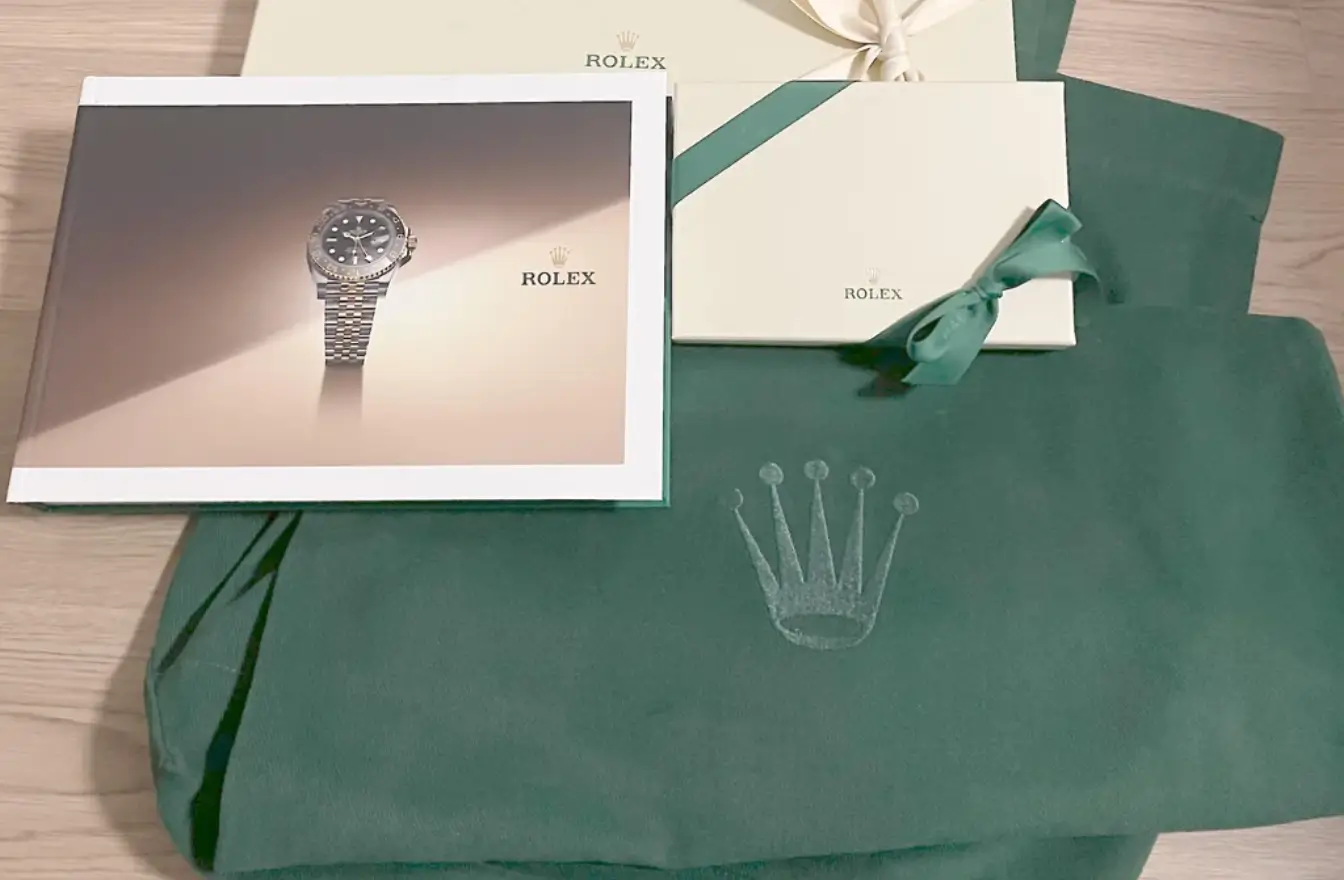
Rolex often invites buyers to private events, showing them the luxury lifestyle
Rolex doesn’t just sell watches—they sell an invitation to a lifestyle. Their approach to customer experience is notoriously selective and personalised. Buyers often receive private invitations to exclusive events, like yacht races or art galas, that only Rolex patrons attend.
This makes every interaction feel like a privilege, not a transaction. The brand’s careful curation of experiences deepens emotional connection, turning customers into lifelong advocates.
3. Ditch mass reach for high-impact social moves
You don’t need millions of followers— you just need the right ones.
Luxury brand social media marketing isn’t about going viral. It’s about showing up with content that’s sharp, stylised, and on-brand—every time.
Use your platform to build identity, not noise. Partner with creators who reflect your values and invest in fewer, better campaigns that feel like events.
You’re not competing with other brands. You’re competing with creators—and your content has to hold its own.
4. Personalise everything
Generic is the enemy of luxury. From emails to paid ads to post-purchase flows, personalisation needs to go beyond “first name” tokens. It’s about relevance, anticipation, and subtle signals that show you see your customer.
Smart CRM, dynamic content, concierge-style service—this is where tech meets emotional intelligence.
Because in luxury, details = respect.

How to become an extremely-important-person at Net-a-Porter
Net-a-Porter sets the gold standard for luxury personalisation online. Their smart CRM tracks purchase history, browsing behaviour, and preferences to send highly tailored product recommendations and styling tips.
But it doesn’t stop there—they offer a personal shopping concierge available by chat or phone, mimicking the in-store VIP experience.
Post-purchase, customers receive beautifully packaged shipments with handwritten notes, making every touchpoint feel deliberate and respectful. This blend of cutting-edge tech and human warmth creates a seamless, personalised experience that luxury buyers crave.
5. Stay consistent everywhere
Luxury is built on trust. And trust comes from consistency.
If your tone is playful on TikTok, but stiff on your website, people notice. If your brand visuals change between email and ad, people notice. In luxury, everything matters.
From typography to tone, content pillars to conversion flows—consistency isn’t restrictive. It’s powerful.
The goal? Make your brand unmistakable. Everywhere.
3 luxury brands nailing modern marketing (and what you can learn from them)
When it comes to luxury brand marketing, these three brands are leading the pack. Their strategies offer clear lessons on how to balance heritage, innovation, and emotional connection.
1. Rolls Royce
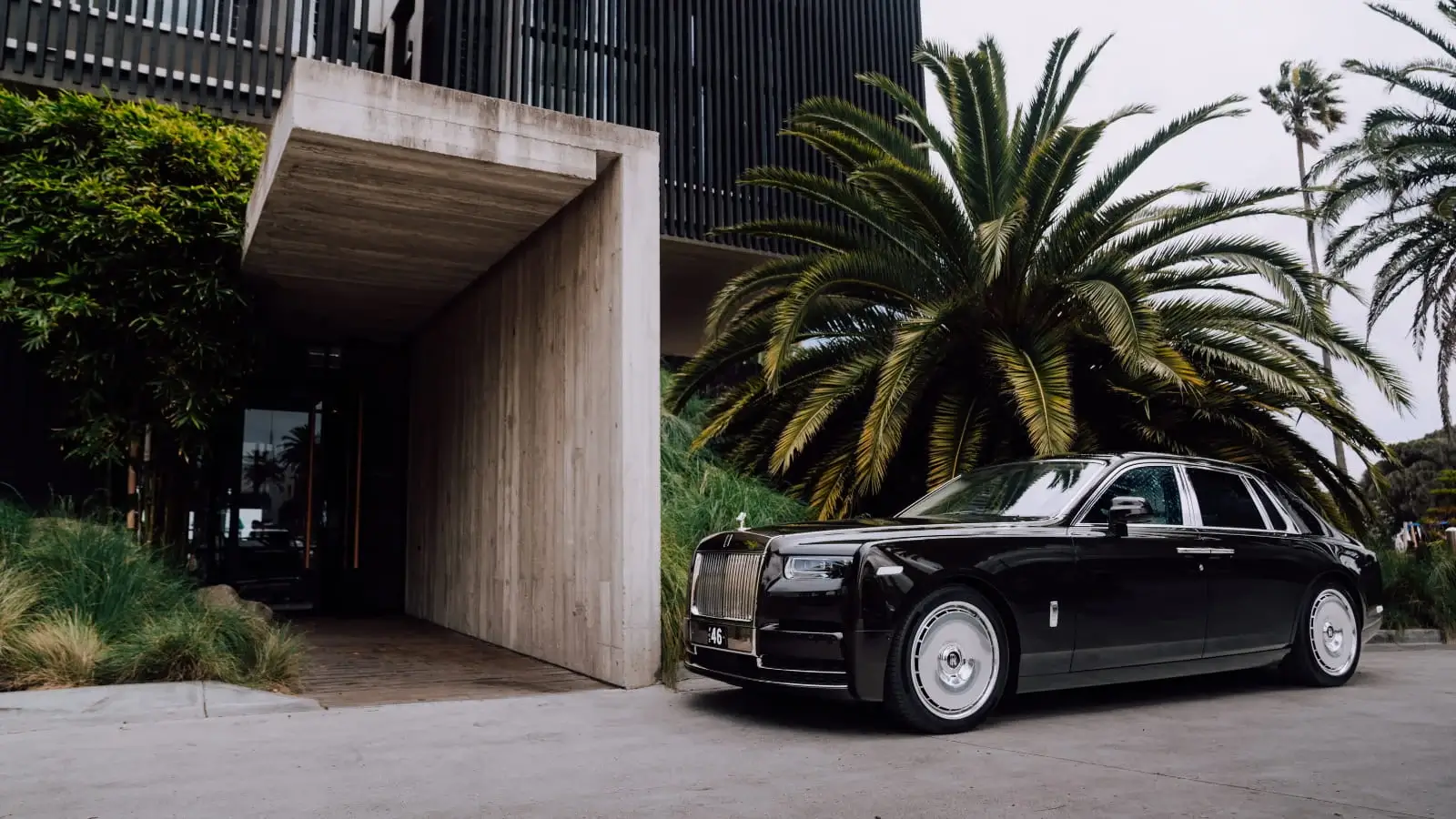
Rolls-Royce isn’t just a car brand—it’s the epitome of craftsmanship, power, and exclusivity. Their marketing speaks to a legacy of bespoke luxury where every detail is meticulously curated to tell a story of timeless elegance.
The brand’s visuals, events, and digital presence don’t just sell vehicles—they sell aspiration, status, and an experience unlike any other.
At Bez, we’ve been privileged to help frame this story through world-class photography and video production. Our work with models like the Rolls-Royce Ghost captures the perfect balance of majesty and motion, creating content that’s as enduring as the brand itself.
2. GUESS
GUESS has long been synonymous with accessible luxury—bold, stylish, and trend-forward. Their marketing effortlessly blends fashion with lifestyle, making luxury feel both desirable and attainable.
Their recent expansion into children’s fashion with GUESS Kids shows how they evolve while maintaining brand sophistication.
Bez partnered with GUESS to bring this to life across Australia, from capturing elegant store displays to creating an internal training video that aligns all retail teams with GUESS’s distinctive brand energy.
We focus on translating their style and retail excellence into compelling narratives that resonate with their audience.
3. Four Seasons
Four Seasons sets the bar for experiential luxury. Their marketing highlights personalised service and intimate moments that make guests feel uniquely valued—whether it’s a private villa or a bespoke spa treatment.
Their storytelling blends exclusivity with emotional connection, turning stays into lifelong memories.
Their content strategy focuses on inviting customers into a world of privilege, anticipation, and seamless service—all hallmarks of true luxury hospitality.
Bez is where luxury brands go to stay relevant
Luxury marketing today goes beyond products—it’s about crafting desire, identity, and exclusive experiences. It demands deep customer insight, authentic storytelling, personalised journeys, and consistent brand presence.
The brands that succeed—like Rolls-Royce and GUESS—focus on connection over noise and quality over quantity.
Bez specialises in luxury marketing that resonates and converts. As a full service agency, we can take care of all your luxury brand marketing needs.
If you want to cut through and build real loyalty, let’s connect.
Luxury brand marketing FAQs
1. What are some examples of luxury brands?
Luxury brands span fashion, automotive, hospitality, and more.
Think Rolls-Royce, Gucci, Chanel, Four Seasons Hotels & Resorts, and Tiffany & Co.
These brands combine heritage, craftsmanship, and exclusivity to create unmatched experiences.
2. What are the key elements of a luxury marketing strategy?
Successful luxury marketing hinges on:
- Deep customer insight beyond income levels
- Authentic and emotionally charged storytelling
- Creating privileged, exclusive experiences
- Personalisation that feels bespoke, not generic
- Consistency across all brand touchpoints, from social to CRM
3. What are some top tips for luxury marketing?
- Own your unique origin story and weave it into everything you do.
- Focus on quality over mass reach—target the right audience, not the biggest.
- Design experiences that make customers feel chosen and special.
- Use personalisation to build genuine connections.
- Stay visually and tonally consistent across every channel.
4. How is luxury brand marketing different from regular marketing?
Luxury marketing isn’t just about features or price—it’s about crafting desire and identity. It requires emotional storytelling, curated exclusivity, and impeccable consistency to create a sense of privilege that goes beyond product benefits.
5. Why is personalisation so important in luxury marketing?
Personalisation shows your customers they’re seen and valued—something essential in luxury. It builds trust and emotional connection by delivering relevant, bespoke experiences that feel more like concierge service than mass marketing.